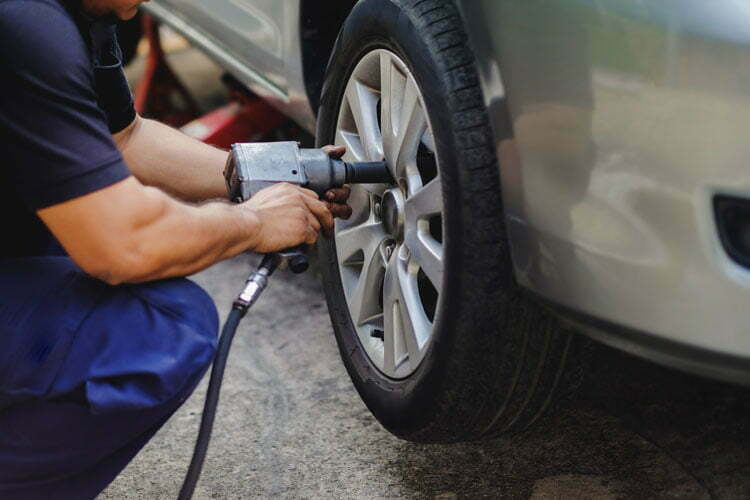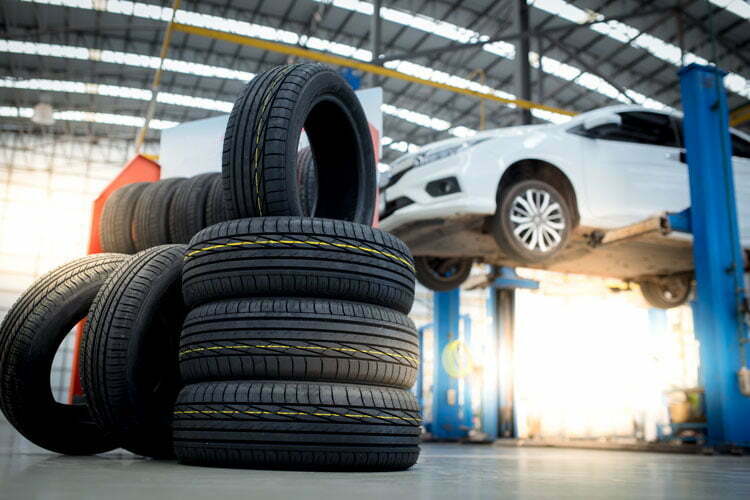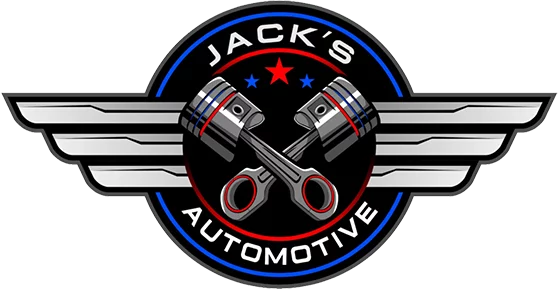Importance of Tire Maintenance

Understanding the Importance of Tire Maintenance
The only contact your car or truck has with the roadway – is its tires. You can’t underestimate the importance of tire maintenance. Maintaining the correct pressure of tires, ensuring proper wheel alignment, preventing uneven tire wear, and checking for properly inflated tires are just a few ways you can support good tire maintenance. Poor tire maintenance can actually undermine safe driving.
Tire Maintenance Light
Today, many vehicles are equipped with a tire maintenance light. When this light is lit up on the dashboard, it’s often a sign that the tires are underinflated. Underinflated tires can cause premature tire wear as well as tire failure. Overinflated tires can also trigger your tire maintenance light to come on. The tire maintenance sensor may come on and stay on when driving, which indicates underinflated tires. However, the light may also come on and go off. This indicates that your sensor may not be working properly. In such cases, you should have your mechanic check your sensor.
Tire Pressure
When you purchase a vehicle, the auto’s sticker generally reports the recommended tire pressure for its tires. The owner’s manual for the vehicle will also list the ideal tire pressure. Proper tire pressure is crucial for driving safety, of course, but it also ensures good gas mileage. Because visual inspection isn’t a reliable way to check the tire pressure, you should use a tire gauge or take your vehicle to a tire maintenance service to have the pressure checked.
Tire Maintenance Schedule
Every driver should follow a reliable tire maintenance schedule. Regular tire maintenance is the key to good tire maintenance. Tires are vulnerable to wear and tear. According to the National Administration of Traffic Safety Administration, a tire maintenance schedule can:
- Improve how the car or truck handles on the road
- Improve fuel efficiency
- Enhance the longevity of tires
- Reduce the risk of avoidable breakdowns and crashes (flat tires)
As you create a regular tire maintenance schedule, you should include the following measures:
Tire Rotation
Tire rotation helps to equalize tire wear between the front and back tires. The auto industry recommends that car owners rotate tires every 5,000 miles to prevent uneven tread wear. By rotating tires, you can enhance their longevity so you don’t have to purchase new tires quite as frequently.
Check Each Tire’s Pressure
Check each tire’s pressure regularly to ensure that none are underinflated. If you spot low tire pressure, you’ll want to have more air inserted. As mentioned, it’s important to avoid overinflation too. If your tires are overinflated, release air and recheck with your gauge. Insert your tire pressure gauge onto the tire’s valve stem after removing the valve cap to get a tire pressure reading. It’s a good idea to check the pressure of your tires once a month. Keep the tire tread gauge in your car’s glove box so it’s easily accessible. Always follow the tire’s recommended air pressure as outlined in the owner’s manual.
Tire Tread
As you drive, your tired treads grip the road. Over time spent driving, tread depth reduces. Once the treads wear down, the tires do not grip the road as before, which can lead to unsafe driving conditions. Avoiding tread wear is essential for tire safety. The vehicle is more likely to skid and will be difficult to ‘stop on a dime’ when driving conditions call for a quick stop. Just like with tennis shoes, tires don’t perform well once they lose traction. Be sure to monitor tread wear so you can replace your tires when needed.

Tire Maintenance Tips
Follow these tips to drive safer and help improve your tires’ longevity:
- Maintain proper tire inflation
- Rotate your tires every 5,000 miles
- Perform a weekly visual inspection of your tires (look for cracks or bulges)
- Check your tires’ pressure once a month using a tire gauge
- Avoid mixing and matching tires
- Invest in new tires as needed
- Consider changing your tires seasonally (summer and winter)
- If you drive long distances regularly, check your tires more frequently
- Store your spare tires in a clean, dry location (away from sunlight or other direct heat sources)
- Have tire punctures repaired by qualified tire technicians/mechanics
Looking for Auto Tire Repairs and Replacements? Call or contact Jack’s Automotive today!
More Auto Tire Maintenance FAQs
How important is tire maintenance?
Maintaining your tires is part of good car maintenance in general. It’s also crucial for ensuring that your tires are as safe as possible. Worn-out tires are more vulnerable to blowouts and skidding.
What is the most important part of tire maintenance?
Developing a tire maintenance schedule is likely the most important aspect of caring for your tires properly. You shouldn’t skip any aspect of your tire care routine.
Why is it important to check your tires?
It’s important to check your tire’s tread, and pressure, and look to ensure that there are no problems. If your tire tread is worn down or you spot underinflated tires, you should remedy these issues right away. Checking tires allows you to confirm when new tires are needed.
It’s true–there’s quite a bit of maintenance involved in owning a car or truck. Car tire maintenance is just one aspect of caring for your vehicle. By following the tips outlined here, however, you can drive more safely, improve fuel economy, and even extend the life of your car tires.
